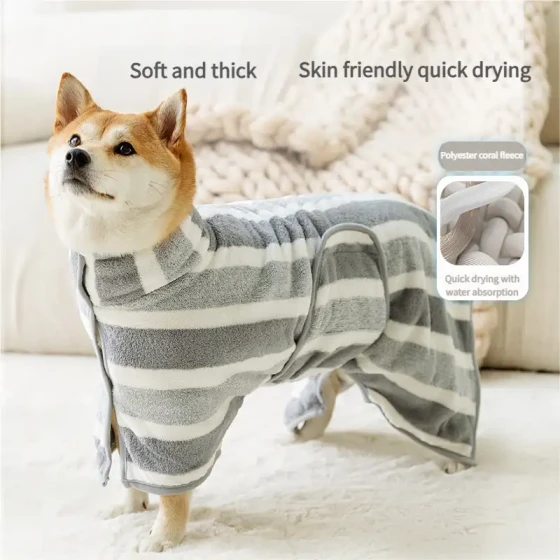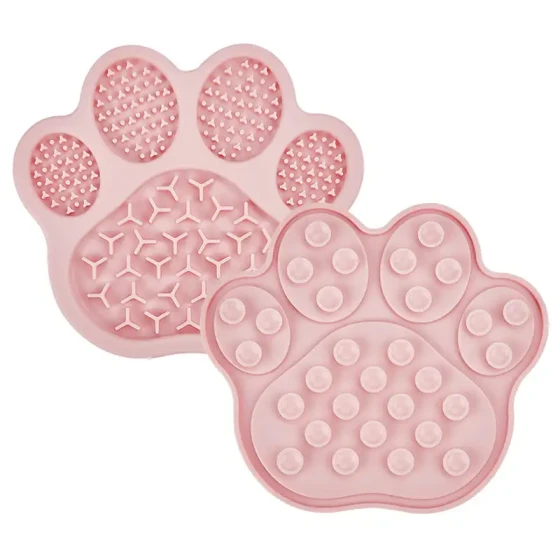Dog Stress Relief, Essential Knowledge for Massaging Dogs
As an owner, you surely know that massage not only helps dogs relax and relieve stress but also allows you to discover any abnormalities in your dog's health through touch. Additionally, it is one of the best ways to communicate emotionally with your dog. So, what should owners pay attention to when massaging their dogs? Here, I have organized some important points for massaging dogs. Owners, start learning now.

Massaging dogs for stress relief is very popular nowadays
1. Daily Massage
Take some time daily to give your beloved dog a 10-minute massage; this can help maintain your dog's health.
Use a palm-sized amount of palm oil to slowly touch your dog’s whole body, emotionally touching all parts, including hair, skin, fat, muscles, and even the bones. This extra "touch" allows your dog to immediately recognize it is bathed in loving attention. Soon you will find that although massage takes time, you will gain much more.
After a few days, you will clearly understand your dog's normal physical condition. During the following daily routines, you can quickly notice changes in your dog's body, such as surface temperature, tactile sensation, localized swelling or muscle tension, decline in coat health, or skin tightness. Some signs, if not detected early, may lead to more serious problems that require veterinary visits, medication, or even surgery or further treatment. Knowing your dog’s normal state definitely helps provide better important information to your veterinarian. Remember! Regular massage is a way to increase your pet’s vitality and quality of life.

Massaging dogs can also soothe their nervous emotions
2. Soothe Nervous Dogs
When thunder makes your dog start whining, panting, or hiding under the bed, how can you help it feel less anxious?
The answer might be massage. Use a stroking method to relax the nervous system. Gently place your palm flat on the dog’s head or neck and softly stroke along the spine down to the tail, repeating slowly multiple times. If your dog enjoys this massage, you can gradually increase the pressure. After the massage, place one hand under the dog’s head and the other under the pelvis; these corresponding areas control the spinal nerves responsible for rest and relaxation. This technique is very helpful when your dog is nervous or scared due to nail trimming, vaccinations, or when it feels agitated or unsettled.
3. Warm up Active Dogs
When you go out to exercise, you often hear people say warm-up exercises are important. In fact, active dogs love competing, running, playing hide-and-seek with their owners, or simply playing energetically. They also should have a proper warm-up to avoid injuries. For the first few minutes, gently stroke your dog's entire body, briskly rubbing larger muscles (such as neck, shoulders, hips, and thighs) with your palm, lightly squeezing and releasing the muscles. This gesture is similar to kneading bread dough. Cover each lower limb with your fingers and lightly squeeze then relax, step by step, allowing all the dog's legs to receive warm-up massage. Apply more affectionate strokes to the whole body to stimulate the nervous system, then finish this session.
4. Relieve Joint Stiffness and Soreness
If you spent several hours playing with your dog in the park over the weekend, or climbed mountains all day Sunday, your dog might seem less energetic on Monday!
Is your dog limping to drink water or refusing to play? Indeed, too much physical exertion in a short time, or aging, can cause pain, joint, and muscle stiffness in dogs. To help relieve your dog’s joint stiffness and soreness, start by stroking the joint areas to warm the tissues, then cover the joints with both hands and gently apply pressure.
You can coordinate your breath or count numbers to slowly establish the rhythm and relaxation pace of the massage. A motor-like motion can stimulate fluid flow in the muscles and release muscle tension around the joints. Avoid sudden or direct force on bones; instead, use more massage to soothe the nerves. Remember, regularly massaging your pet helps prevent joint stiffness and pain, and aids in avoiding arthritis. Again, massage is not a substitute for veterinary treatment—if serious conditions exist, please consult your veterinarian for diagnosis and treatment.
-560x560.webp)


